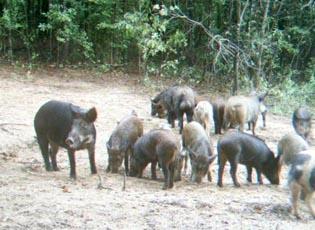Sus scrofa Linnaeus, 1758 (ITIS)
Wild boar, wild hog, feral pig, feral hog, Old World swine, razorback, Eurasian wild boar, Russian wild boar
Eurasia (Rouhe and Sytsma 2007)
1500s (Rouhe and Sytsma 2007)
Imported as a food source and escaped from domestication or were intentionally released (Rouhe and Sytsma 2007)
Damages native plants and crops and competes with native species (Rouhe and Sytsma 2007)
Feral swine have been reported in at least 35 states. Their population is estimated at over 6 million and is rapidly expanding. Range expansion over the last few decades is due to a variety of factors including their adaptability to a variety of climates and conditions, translocation by humans, and a lack of natural predators.

Wild Boar, Management
Billy Higginbotham Texas AgriLife Extension Service
Find more images
Spotlights
Distribution / Maps / Survey Status
Videos
All Resources
Selected Resources
The section below contains highly relevant resources for this species, organized by source.
Council or Task Force
Partnership
Federal Government
International Government
State and Local Government
Academic
Professional
Integrated Taxonomic Information System. Sus scrofa. [Accessed Sep 28, 2023].
Rouhe, A., and M. Sytsma. 2007. Feral Swine Action Plan for Oregon [PDF, 1.43 MB]. Prepared for the Oregon Invasive Species Council by the Portland State University Center for Lakes and Reservoirs.
